The Aviation Art of Russell Keaton (1995) by Russell Keaton
Kitchen Sink has a long history of comic strip reprints, of course, but they’re getting more and more lavish.
We get an above-normal amount of introduction…
… and then about 40 pages of business correspondence. It’s fascinating, I’m sure, for a select audience.
But reprints of the comic strip is the main bulk of the book.
I’ve never read this stuff before, and, er, I didn’t really read it this time over, either. But I started! It doesn’t seem bad — it’s more lighthearted than what you’d expect.
Like, sibling rivalry and stuff.
But it’s fine — it’s more amusing than exciting, I guess.
And we get scripts! Interesting I’m sure.
Heh. Well, that’s one way to distinguish yourself — many of the Sunday pages feature paper dolls (some which seem to be contributed by readers).
The plots get more action oriented as the strip progresses.
But not very heavy.
Ron Evry writes in The Comics Journal #185, page 38:
SOMETIMES IT SEEMS odd that reprint
books are devoted to obscure comic strips that
never had much Of a following in the first place
and weren’t panicularly brilliant either, when
there are so many tluly classic comics that are
cying out for compilation. At first glance, The
A viation A rt ofRussell Keaton seems to be one Of
these oddities. But actually, this book is a must-
read for anyone who is even slightly interested in
how comic strips were developed by artists and
syndicates for most of the 20th century.
Keaton had a short but exciting career in
comics before his untimely death at the age of
35. He was Dick Calkins’ very first assistanton
Buck Rogers, and was responsible for ghost-
drawing the Sunday page for a number of years.
Keaton’s work had a dynamic, Saturday-mati-
nee flair to it that lent a good deal of excitement
to Rogers, especially compared to Calkins’
stiff, crude dailies.[…]
There may never again be such a thorough
look at a comic strip’s background and evolu-
tion as in The Aviation Art of Russell Keaton.
The fact that Keaton worked on the strip for
about six years before he passed away makes
it possible to present a fairly complete range of
correspondence in conjunction with the car-
toons being discussed (which are almost en-
tirely shot from original art). Imagine the size
of a similar volume devoted to Rube Goldberg,
Walt Kelly or Harold Gray. It would be bigger
than any encyclopedia and way too deep to
follow. Keaton’s short career makes him all the
more accessible, and Kitchen Sink deserves a
big hurrah for making this volume available.
The book was nominated for a couple of Harvey awards.
This is the one hundred and ninetieth post in the Entire Kitchen Sink blog series.
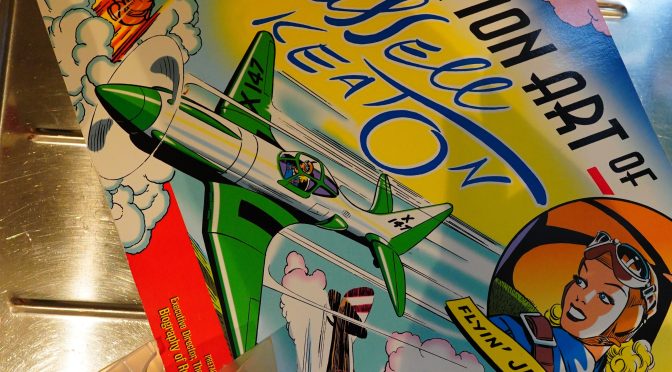
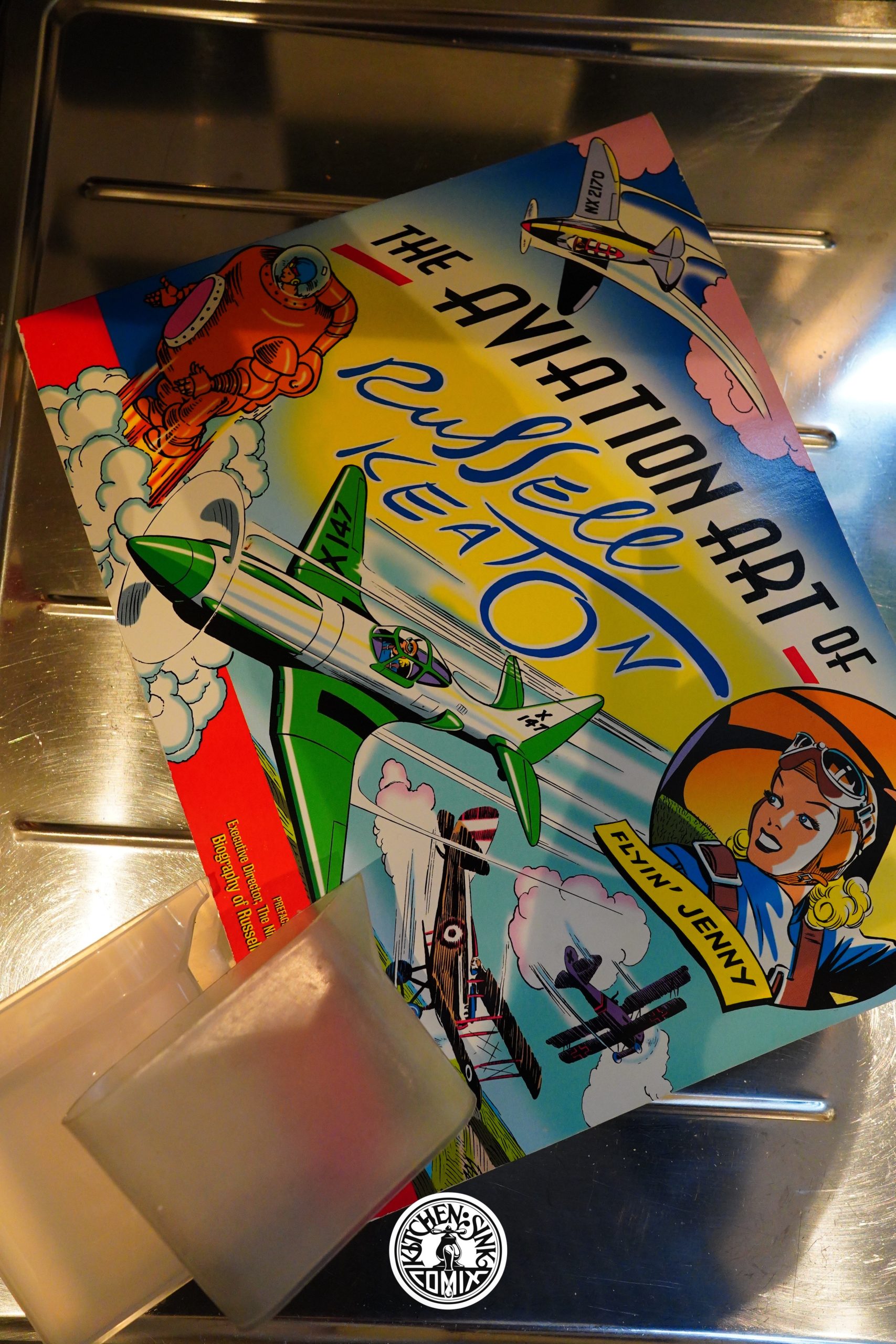
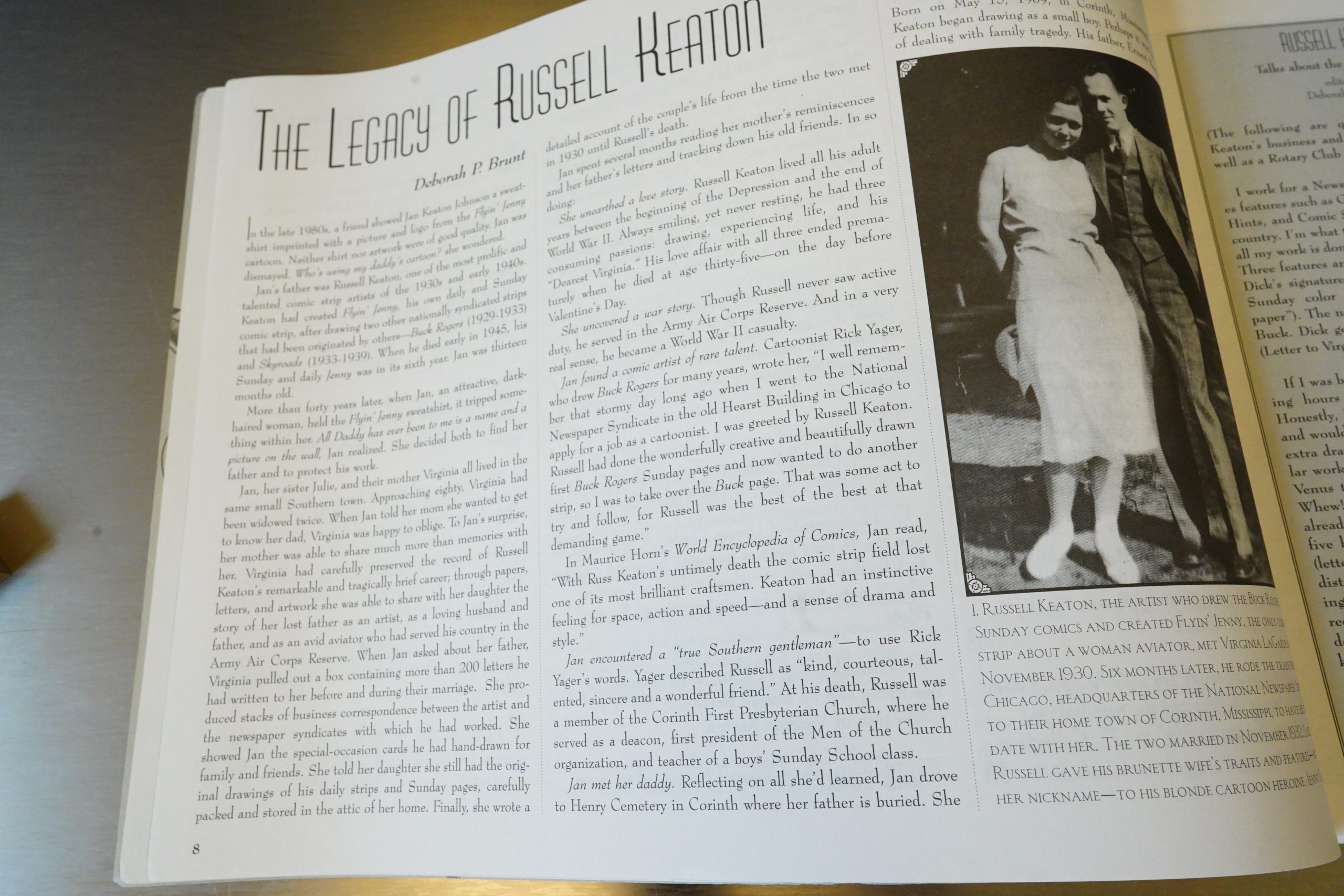
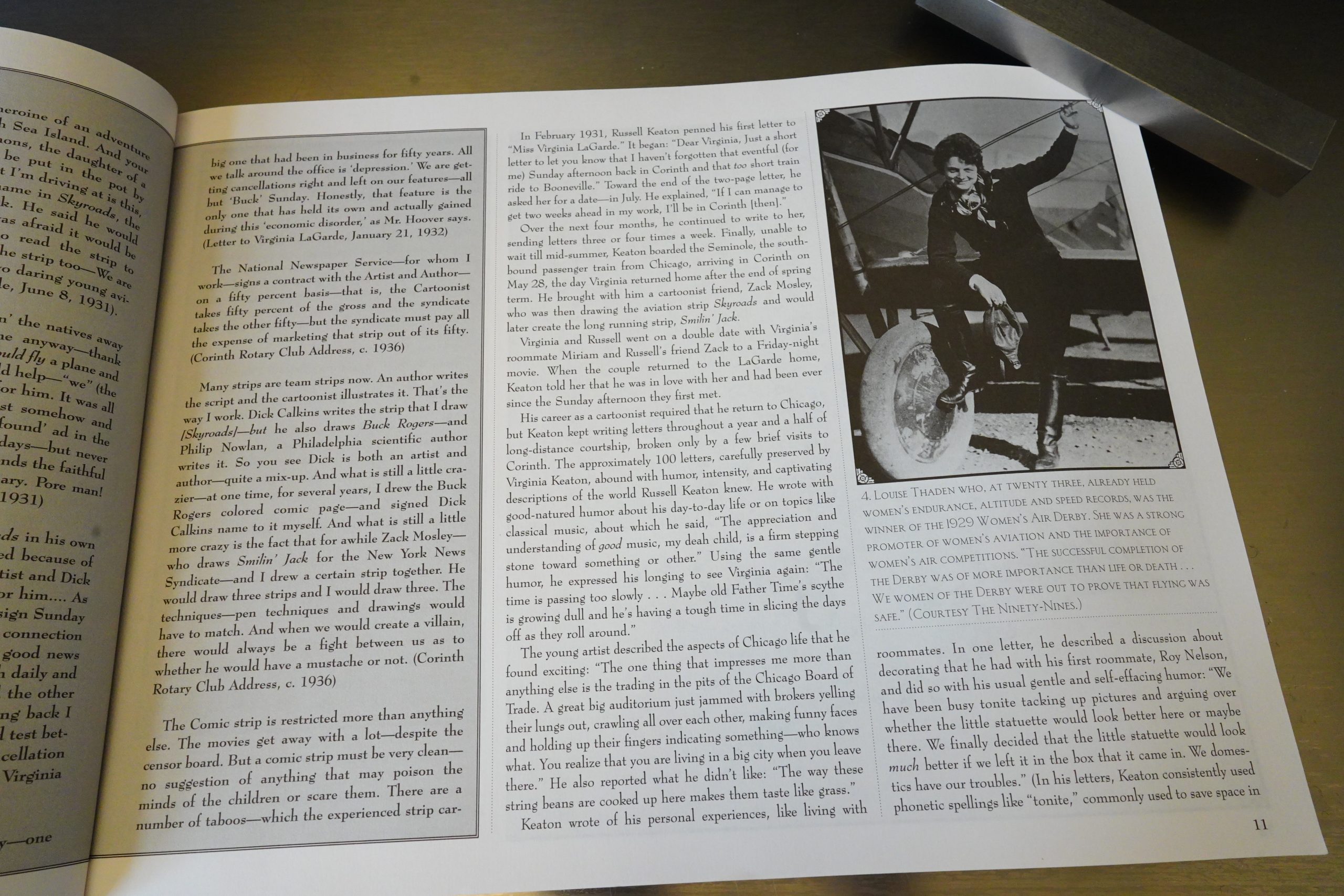
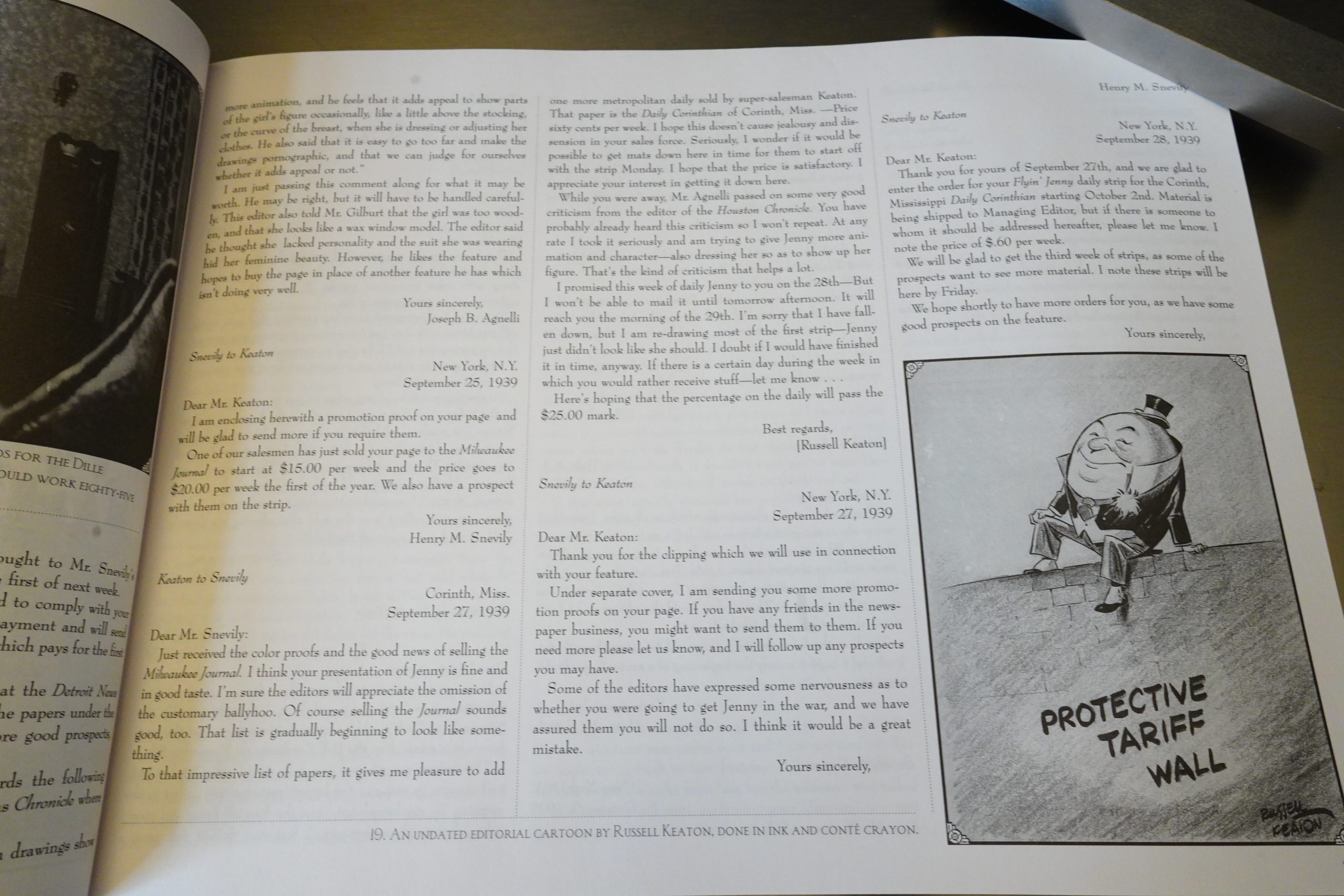
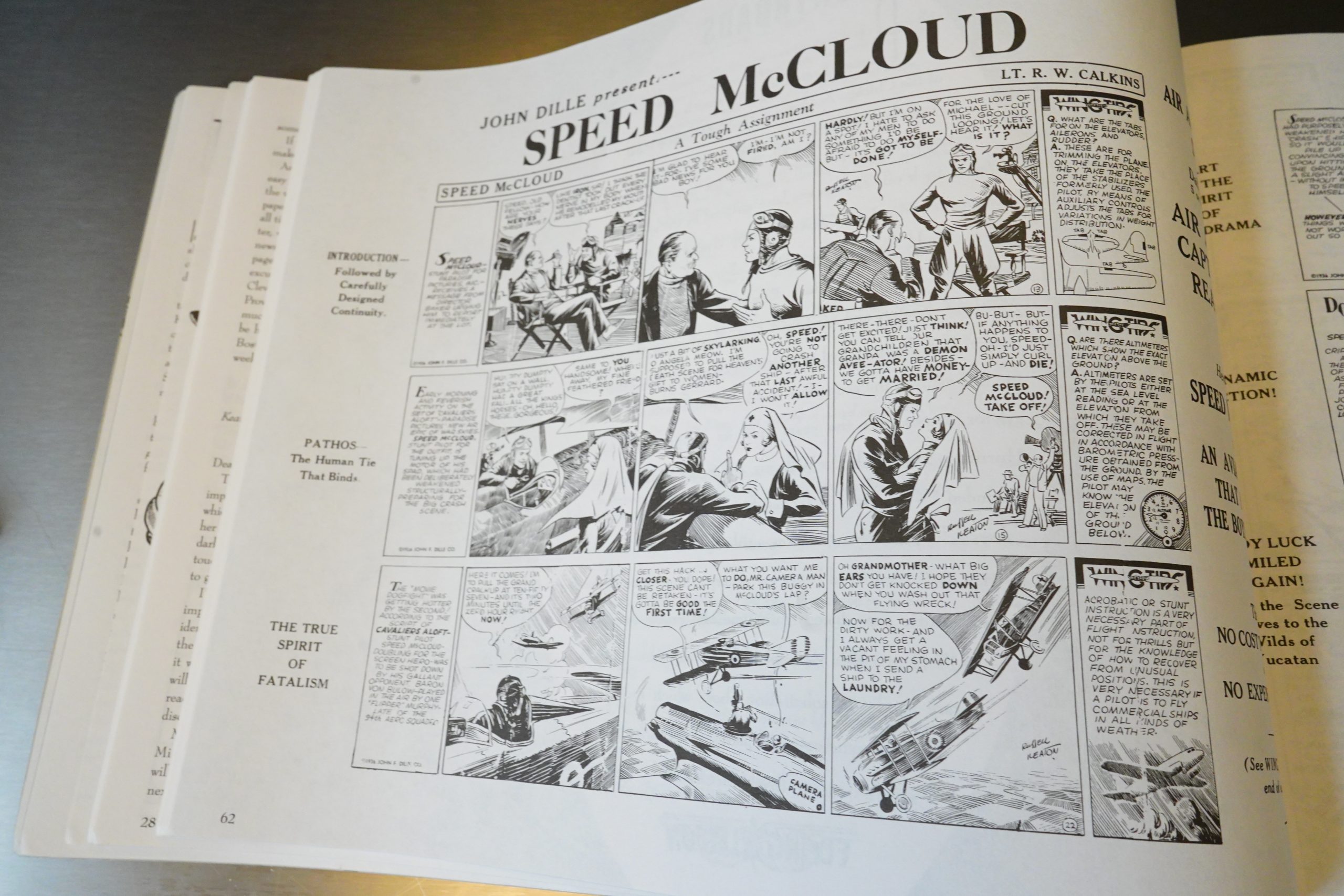
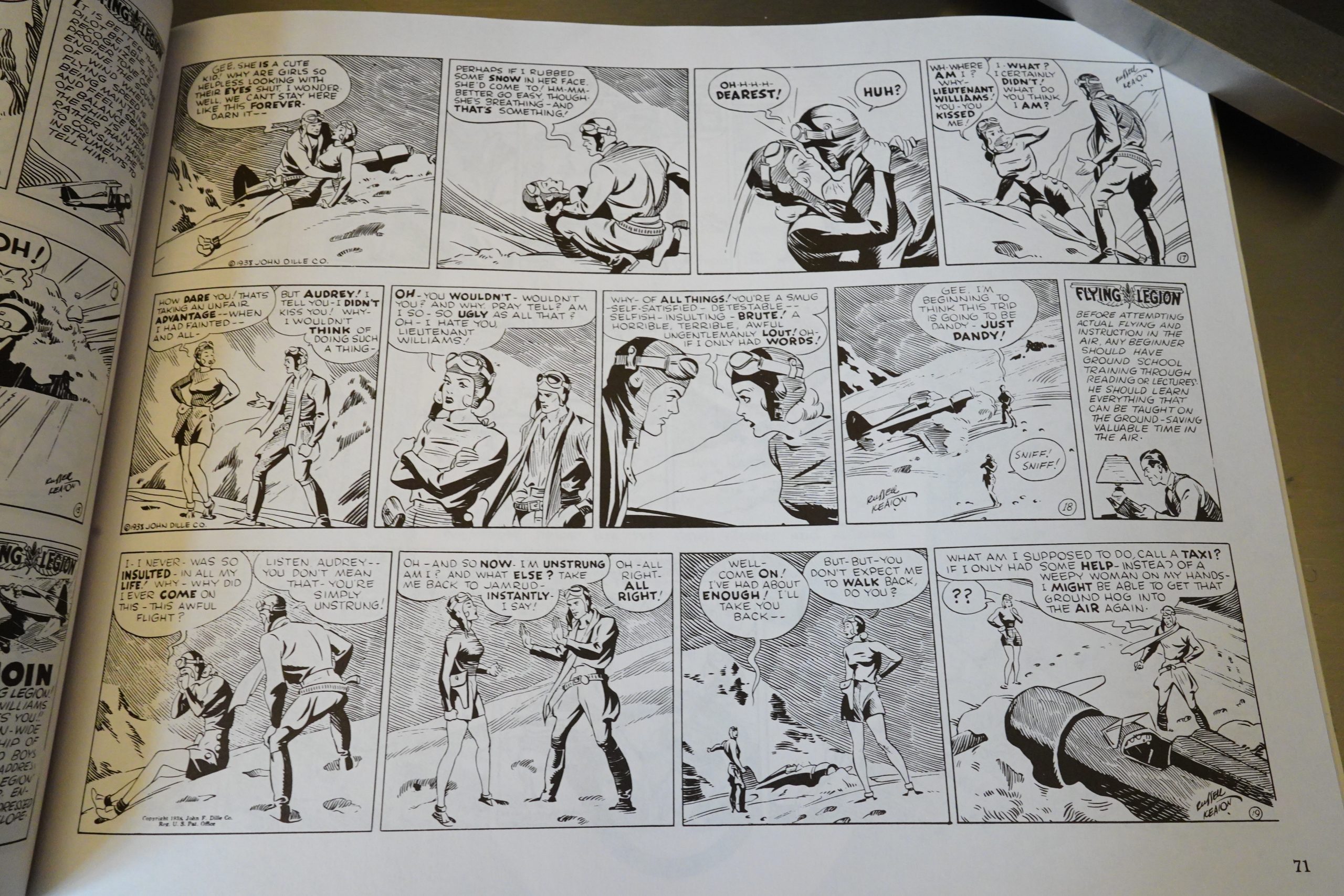
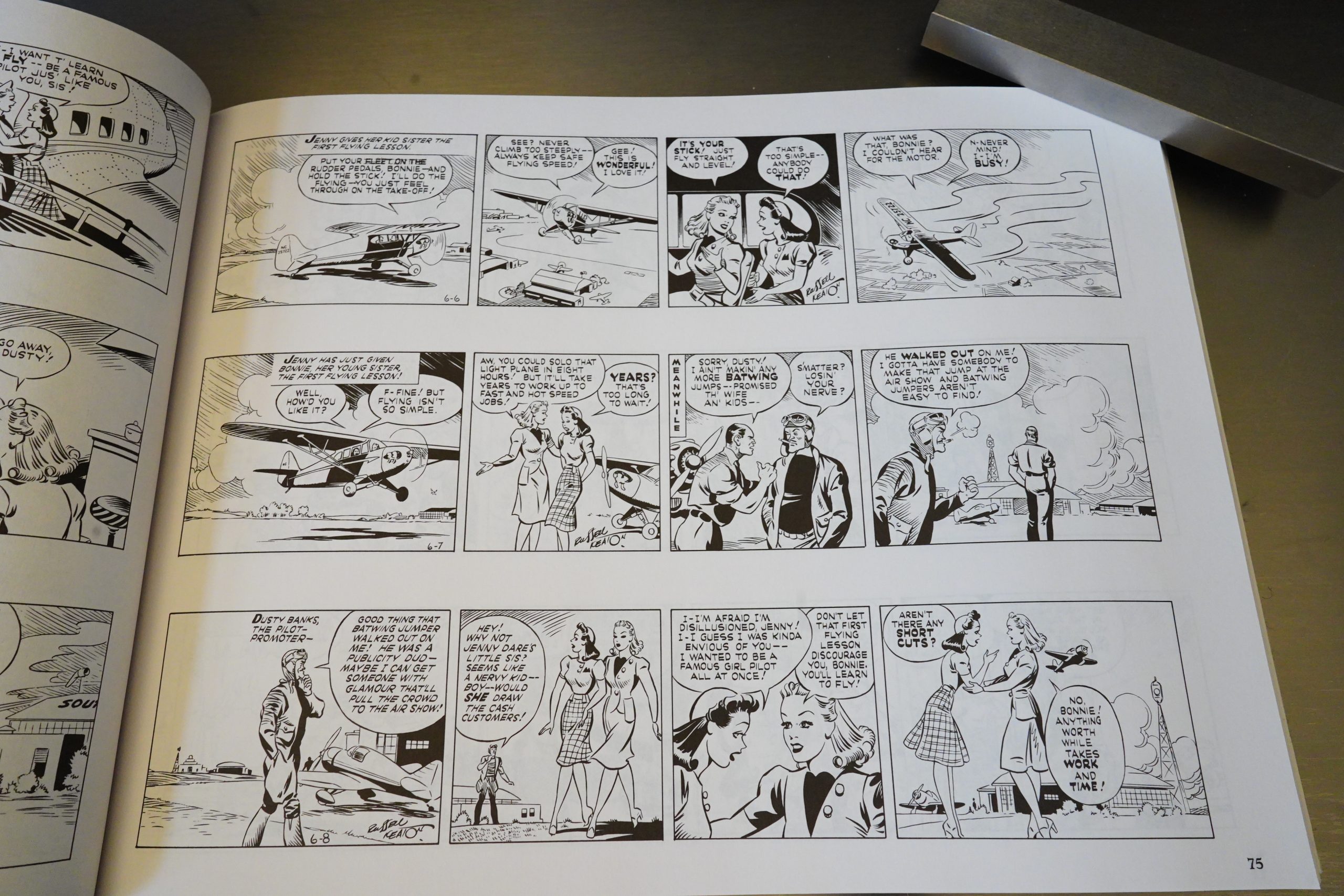
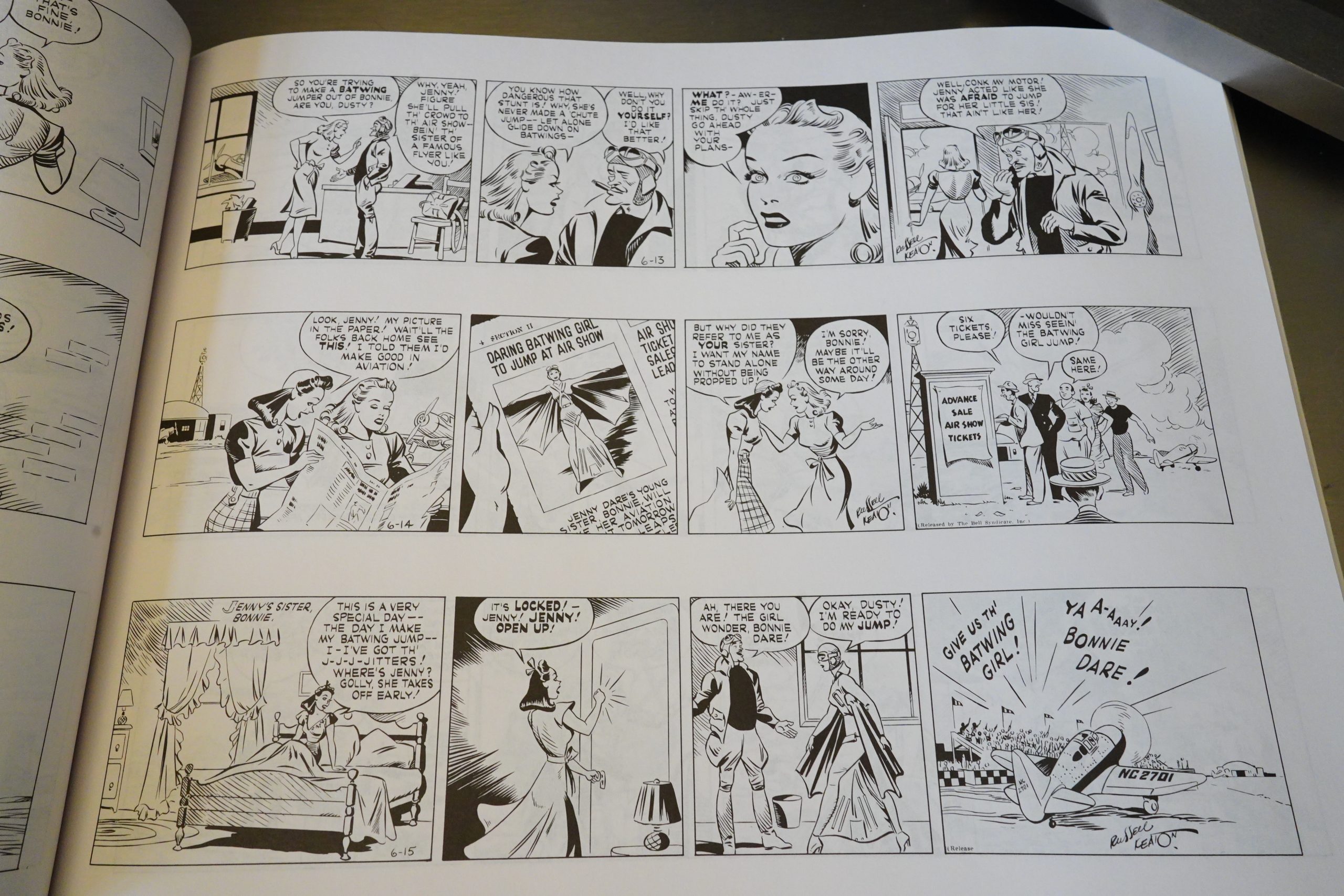


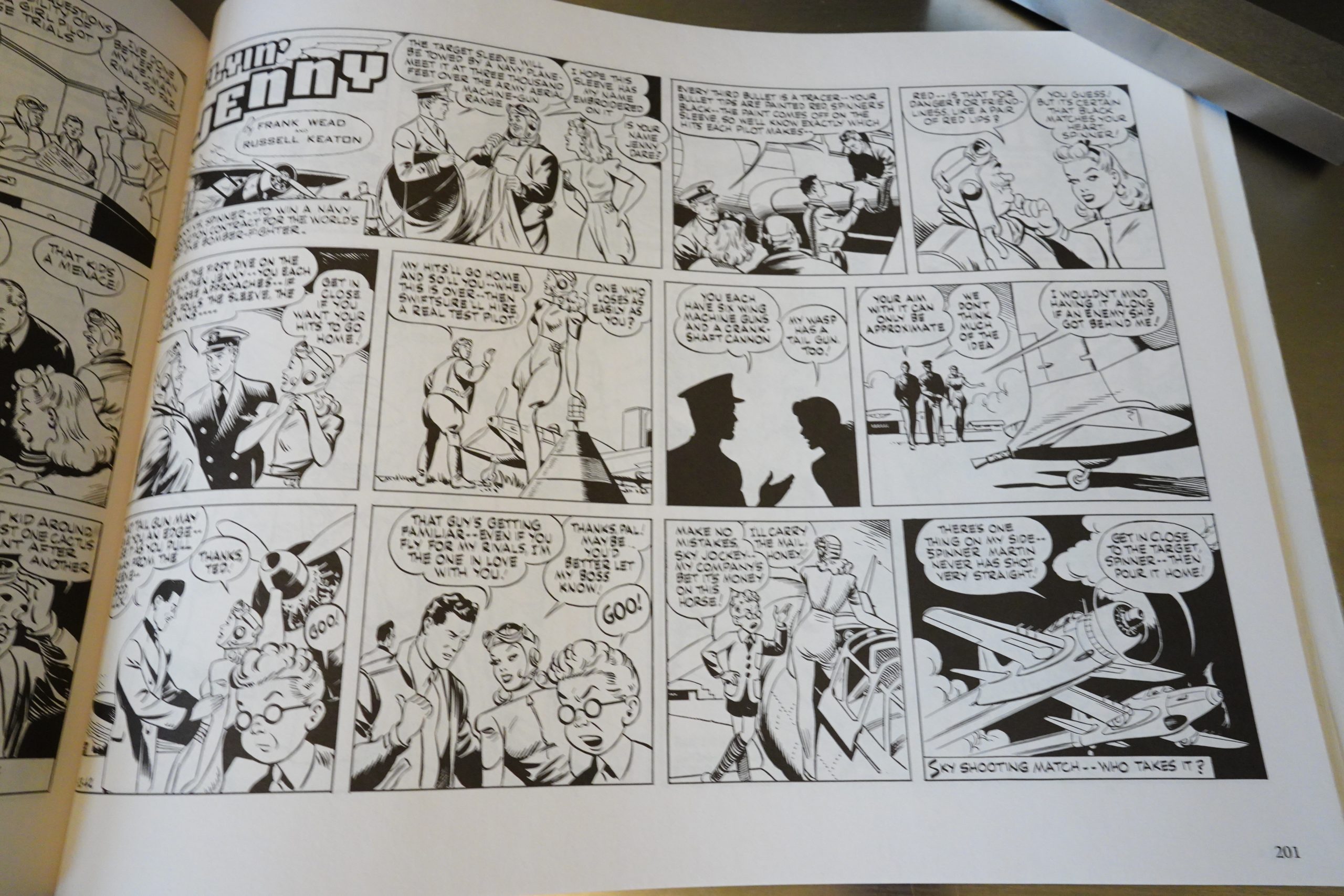
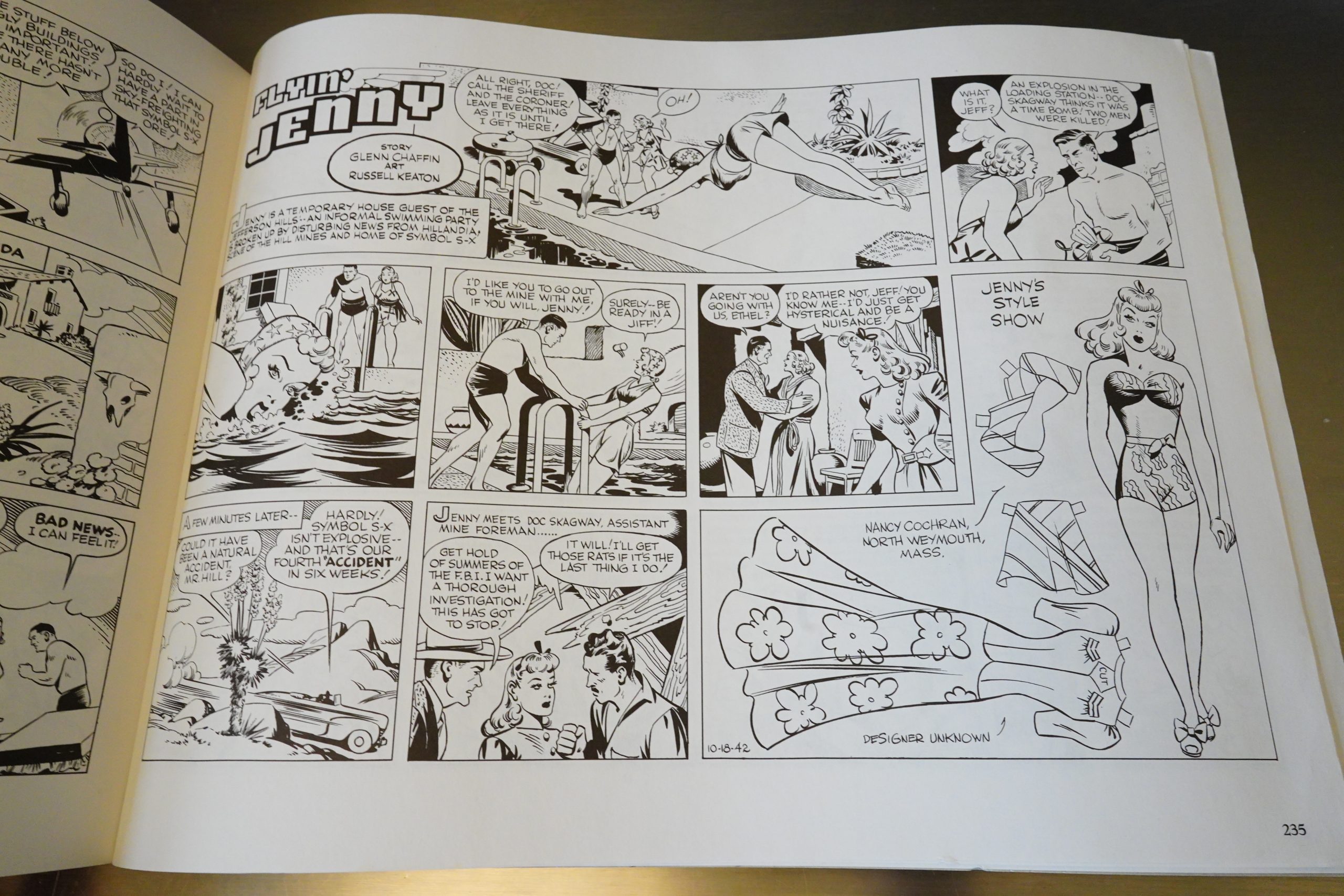
I am doing research on a comic strip called Hurricane Hawk. I have found some of the colored comic books, but do you know if the John F Dille company National Newspaper Service ever published a daily or weekly?
Thank you,
Mike
No, sorry — I don’t know.